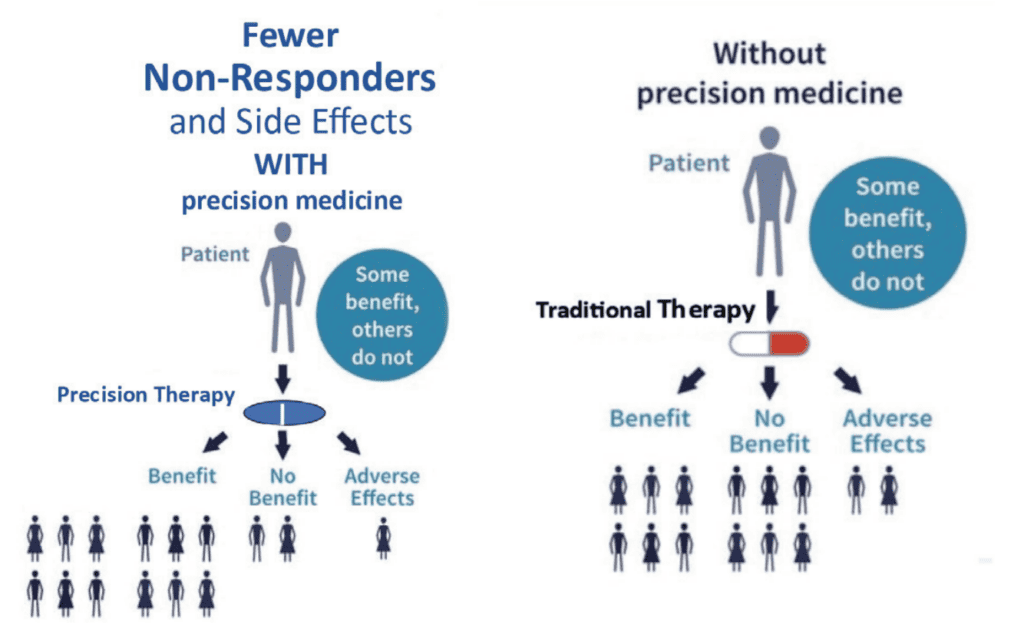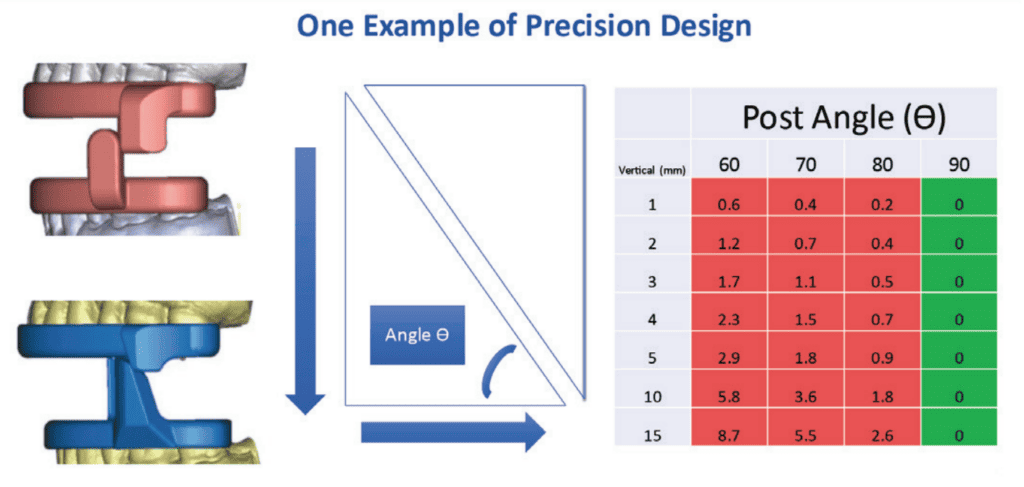Advancing precision in OAT therapy with precision designs like those from ProSomnus, can result in more compliant and effective appliance wear.
The most important impact of precision medical applications in DSM is in reducing the number of ‘False Non-Responders’. False non-responders are patients who would or could have responded to OAT but did not because of device inaccuracy, fit, comfort, bulk, side effects, etc. OAT has long suffered distrust from physicians because of unqualified dentists, inadequate AHI reduction, frequent side effects and poor published scientific data. Nobody wants to find out they had a ‘false negative’ Pregnancy or Covid screening test. NOT responding to the detection of human chorionic gonadotropin or specific proteins segments for the SARS-CoV-2 virus can lead to unintended consequences and treatment decisions.

No medication, treatment or protocol is 100% efficacious or adherent. By utilizing precision medical designs and manufacturing, OAT has taken two giant steps forward in reducing the number of false non-responders. First, precise bite transfer, stabilization, and advancement along with smaller device volume and improved tongue space have increased the number of OSA patients that CAN respond to mandibular advancement treatment. Advancing the mandible opens the airway, but not everyone can tolerate the distance or bulkiness of custom devices. Second, the use of medical grade materials, and the above-mentioned precision attributes have reduced both the AERs (adverse event reports in FDA database) and common side effects by reducing the dose of advancement required. With ProSomnus precision designs, less advancement is required and therefore it is easier to return to MIP, more people respond and there is more comfort. Medical Grade VI materials did not even appear in the 57% or AERs that included tissue reactions, hypersensitivity, toxicity, and allergic reactions.

The AADSM has outlined the criteria for an ‘Effective OA for OSA’ in their 2014 definition. Devices should be able to position and stabilize the mandible accurately and advance in increments of 1 mm or less for at least 5 mm. The construct of replicating the construction bite and stabilizing the mandible in the treatment position are seminal to a precision medical model. Precision devices have demonstrated accurate bite transfer (confirmed using articulators) and retrusion prevention using the 90-degree post design. The figure below demonstrated a 1.8 mm loss of dose or advancement with a jaw drop of just 5 mm.

The AADSM’s 2018 ‘Standards for Screening, Treating and Managing Patients’ and the 2017 ‘Management of Side Effects’ position papers support more precise screening, treatment, management, and side effect prevention constructs. Most literature we have depended on to support treatment decisions and communicate with the medical community has fallen short. In the last few years, independent peer reviewed articles demonstrating the efficacy and adherence of ProSomnus precision mandibular advancement devices have appeared in; JCSM, CHEST and the JDSM, posters at the AAO-HNSF, AASM, AADSM, World Sleep, iBEDSSMA and the ESRS. Head-to-head trials with CPAP and Hypoglossal Nerve Stimulation along with the FDA Severe Indication Clearance Trial will advance precision even more.